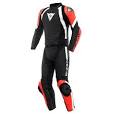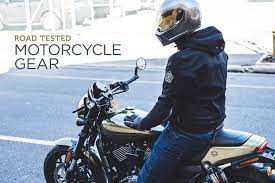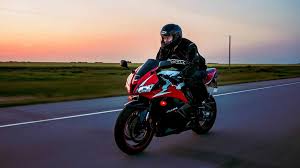Dainese Motorcycle Clothing: The Perfect Blend of Protection and Style for Riders

Dainese Motorcycle Clothing: The Ultimate in Rider Protection and Style
When it comes to motorcycle clothing, Dainese stands out as a brand that combines cutting-edge technology with sleek design to offer riders the ultimate in protection and style. With a rich history dating back to 1972, Dainese has been at the forefront of innovation in motorcycle apparel, constantly pushing the boundaries of what is possible in terms of safety and performance.
One of the key features that sets Dainese apart is their focus on rider safety. Their range of motorcycle clothing is designed with state-of-the-art materials and technologies that provide maximum protection in the event of a crash. From abrasion-resistant leather suits to impact-absorbing armour, Dainese gear is engineered to keep riders safe on the road or track.
But it’s not just about safety – Dainese also places a strong emphasis on style and comfort. Their clothing is not only functional but also stylish, with sleek designs that make a statement on and off the bike. Whether you’re tearing up the racetrack or cruising through city streets, Dainese gear ensures you look good while staying protected.
From leather jackets and trousers to gloves, boots, and accessories, Dainese offers a comprehensive range of motorcycle clothing for riders of all styles and preferences. Whether you’re a seasoned racer or a casual rider, there’s something for everyone in Dainese’s collection.
In addition to their standard line-up, Dainese also collaborates with top riders and designers to create limited edition collections that push the boundaries of design and technology even further. These special pieces are not only functional but also collector’s items for motorcycle enthusiasts around the world.
So if you’re looking for high-quality motorcycle clothing that combines top-notch protection with cutting-edge style, look no further than Dainese. With their commitment to innovation and excellence, Dainese continues to set the standard for rider gear in the world of motorcycling.
Essential Tips for Choosing and Maintaining Dainese Motorcycle Clothing
- Choose the right size to ensure a proper fit and maximum protection.
- Look for CE-certified armour in key impact areas like shoulders, elbows, and knees.
- Consider the type of riding you will be doing to choose the appropriate style of clothing (e.g. leather for racing, textile for touring).
- Check for ventilation features to stay cool and comfortable during rides.
- Inspect the stitching and quality of materials for durability and longevity.
- Follow manufacturer’s care instructions to maintain the protective qualities of the gear.
- Invest in additional accessories like back protectors or chest guards for added safety.
- Replace gear if it shows signs of wear or damage to ensure continued protection.
Choose the right size to ensure a proper fit and maximum protection.
When selecting Dainese motorcycle clothing, it is crucial to choose the right size to guarantee a proper fit and ensure maximum protection. Properly fitting gear not only enhances comfort but also plays a vital role in the effectiveness of the protective features. Ill-fitting clothing can compromise safety measures and limit mobility while riding. By selecting the correct size according to Dainese’s sizing guidelines, riders can enjoy optimal comfort, unrestricted movement, and the highest level of protection on their motorcycle adventures.
Look for CE-certified armour in key impact areas like shoulders, elbows, and knees.
When considering Dainese motorcycle clothing, it is crucial to pay attention to the presence of CE-certified armour in key impact areas such as shoulders, elbows, and knees. The CE certification ensures that the protective armour meets stringent safety standards, providing riders with enhanced protection in case of impact or a fall. By prioritising gear with CE-certified armour in these critical areas, riders can ride with confidence knowing that they have the necessary protection where it matters most.
Consider the type of riding you will be doing to choose the appropriate style of clothing (e.g. leather for racing, textile for touring).
When selecting Dainese motorcycle clothing, it is crucial to consider the type of riding you will be engaging in to ensure you choose the most suitable style of gear. For high-speed racing activities, such as track days or competitions, opting for leather clothing provides optimal protection and abrasion resistance. On the other hand, for long-distance touring or adventure riding where comfort and versatility are key, textile clothing offers breathability and flexibility. By matching the style of your Dainese motorcycle clothing to the specific demands of your riding activities, you can enhance both safety and comfort on the road.
Check for ventilation features to stay cool and comfortable during rides.
When considering Dainese motorcycle clothing, it is essential to check for ventilation features to ensure a cool and comfortable riding experience. Proper ventilation is crucial, especially during long rides or hot weather conditions, as it helps regulate body temperature and prevents overheating. Dainese’s innovative designs often incorporate strategic ventilation points that allow airflow to circulate, keeping riders cool and comfortable throughout their journey. By paying attention to ventilation features in Dainese gear, riders can enjoy a more enjoyable and refreshing ride without compromising on safety or style.
Inspect the stitching and quality of materials for durability and longevity.
When considering Dainese motorcycle clothing, it is essential to inspect the stitching and quality of materials to ensure durability and longevity. The strength of the stitching indicates how well the garment will hold up over time, especially during challenging rides. High-quality materials not only enhance comfort but also contribute to the overall longevity of the clothing. By paying attention to these details, riders can make informed choices that prioritise both safety and durability in their motorcycle gear selection.
Follow manufacturer’s care instructions to maintain the protective qualities of the gear.
To ensure the longevity and effectiveness of your Dainese motorcycle clothing, it is crucial to follow the manufacturer’s care instructions diligently. By adhering to these guidelines, you can maintain the protective qualities of the gear, ensuring that it continues to offer optimal safety and performance on every ride. Proper care, such as washing according to specifications and storing correctly, not only preserves the quality of the materials but also prolongs the lifespan of your Dainese gear, keeping you safe and stylish for many rides to come.
Invest in additional accessories like back protectors or chest guards for added safety.
When it comes to enhancing your safety on the road or track, investing in additional accessories for your Dainese motorcycle clothing can make a significant difference. Consider adding back protectors or chest guards to your gear for added protection in case of a fall or impact. These accessories are designed to provide extra support and cushioning to vulnerable areas, ensuring that you ride with confidence knowing that you have taken every precaution to stay safe while enjoying your passion for motorcycling.
Replace gear if it shows signs of wear or damage to ensure continued protection.
It is crucial to replace your Dainese motorcycle clothing if it displays any signs of wear or damage to maintain its effectiveness in providing protection. Regularly inspecting your gear for wear and tear, such as fraying seams or scuffed armour, is essential for ensuring your safety on the road. By replacing damaged gear promptly, you can guarantee that your Dainese apparel continues to offer the necessary protection and functionality needed for a safe and enjoyable riding experience.




